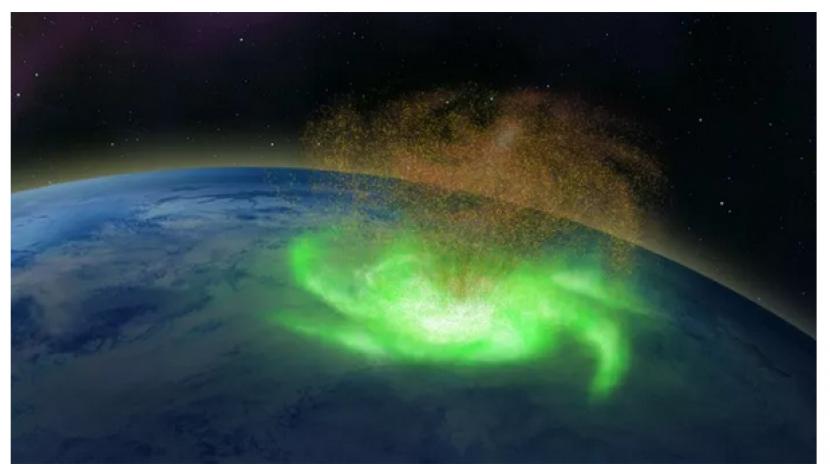A nebula is a gaseous structure that is illuminated by radiation from nearby stars.
REPUBLIKA.CO.ID, JAKARTA — Nebulae are gaseous structures that are illuminated by radiation from nearby stars, and they are some of nature’s most beautiful forms. With the help of amateur astronomers who laid the groundwork, an international team of astronomers has discovered a type of nebula around a binary star they call the ‘galactic emission nebula’.
The binary star YY Hya is central to this discovery. YY Hya is a periodically variable star consisting of a K dwarf star and a hot white dwarf (WD) pair. The stars are located in a joint gas sheath released by the star that eventually becomes a white dwarf.
Prior to that, it passed through the red giant phase as it spread its outermost layer of gas into space. Within this common shroud, the two stars continue to evolve as if they were alone, with stellar radiation illuminating the scattered gas.
The study that presented these findings was entitled “YY Hya and its interstellar environment” and was published in Astrophysics and Astronomy. The lead author is Stefan Kimeswenger of the Department of Astro and Particle Physics at the University of Innsbruck, Austria Science Alert, Sunday (9/1/2022).
“Towards the end of their lives, normal stars expand into red giant stars. Since most stars are in binary pairs, this affects their evolution at the end of their lives. In a near binary system, the bulging outer portion of a star coalesces as a common shroud around the two stars. However, within this gas envelope, the cores of the two stars are practically undisturbed and follow their evolution like a single, independent star,” said Kimeswenger.
Previous discoveries paved the way for this one. Astronomers have found a binary star in a similar arrangement but without a fully developed envelope. The reason they had never seen it was probably because of the size of the cover.
The cover is vast, more than 15 light years away. At that size, astronomers expect the cover to be distorted and disturbed by other stars. But YY Hya is above the galactic plane and is not disturbed by other gas clouds.
“The diameter of the main cloud is 15.6 light-years, almost a million times larger than the distance from Earth to the sun and much larger than the distance from our sun to its nearest neighboring star. In addition, fragments as large as 39 light years have also been found. Because the object is located slightly above the Milky Way, the nebula was able to expand largely undisturbed by other clouds in the surrounding gas,” said Kimeswenger.
The size of this common cover may also hinder their discovery. Which is larger than the field of view of modern telescopes.
“They are too large for the field of view of modern telescopes, and at the same time, they are very dim. In addition, their lifespans are rather short, at least if you consider the cosmic time scale. Just a few hundred thousand years,” Kimesweger said.
This discovery began with a group of French and German amateur astronomers. They examined images of digitally consistent astronomers from the 1980s. They were searching for an unknown object when they came across a fragment of the nebula.
They took the findings to experts at the University of Innsbruck’s Department of Astro and Particle Physics. The professional astronomers combine the findings of amateurs with observations from the last 20 years and with observations from various telescopes and space telescopes, including the Spitzer Space Telescope.
With that data and help, astronomers from the University of Innsbruck ruled out planetary nebulae, their first consideration when they looked at amateur data. Subsequent observations with CHILESCOPE made the large scale of the nebula clearly visible.
Astronomers in the United States continued with spectroscopic observations, which provided important data in discoveries like this. Existing UV images from the GALEX and Catalina Real-Time Transient Survey and TESS are also part of the mix, along with other observations from multiple sources.
– .


